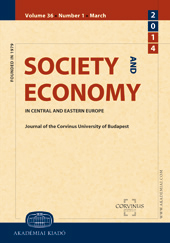Communist populism in Hungary
Communist populism in Hungary
Author(s): Attila AntalSubject(s): Political Ecology, Politics and Identity, Identity of Collectives
Published by: Akadémiai Kiadó
Keywords: populism; Communism; biopolitics; Hungary
Summary/Abstract: According to Cas Mudde, we live in a “populist Zeitgeist”. The paper argues that not just the 21st, but also the 20th century is about populism. In the first section I elaborate the theoretical background of populism, which is claimed to be a never-ending phenomenon: here, various notions of populism are analysed; I investigate the relationship between democracy and populism; and I refer to the biopolitical framework of populism (called biopopulism) as well. This theoretical framework will be used to analyse Communist populism in Hungary. I elaborate the populism of the Horthyera (1920-1944) in the context of Communist populism. Then I analyse the case of Communist populism in Hungary (1948-1989) according to the following aspects: in the context of the working class and the bourgeois elite; the biopolitical character of the regime; goulash Communism as populist legitimacy; and the viewpoint of socialist patriotism. The main aspect of Communist populism is summarized at the end of the third section, and I briefly refer to the afterlife of Communist populism as a nostalgic phenomenon. The regimes analysed in this study aimed to govern the entire life of the citizens, which is why biopopulism is a useful analytical concept. The biopopulist framework shows that the investigation of the historical backgrounds of populism is necessary to understand contemporary populist tendencies.
Journal: Society and Economy. In Central and Eastern Europe ǀ Journal of the Corvinus University of Budapest
- Issue Year: 40/2018
- Issue No: 4
- Page Range: 623-642
- Page Count: 20
- Language: English

